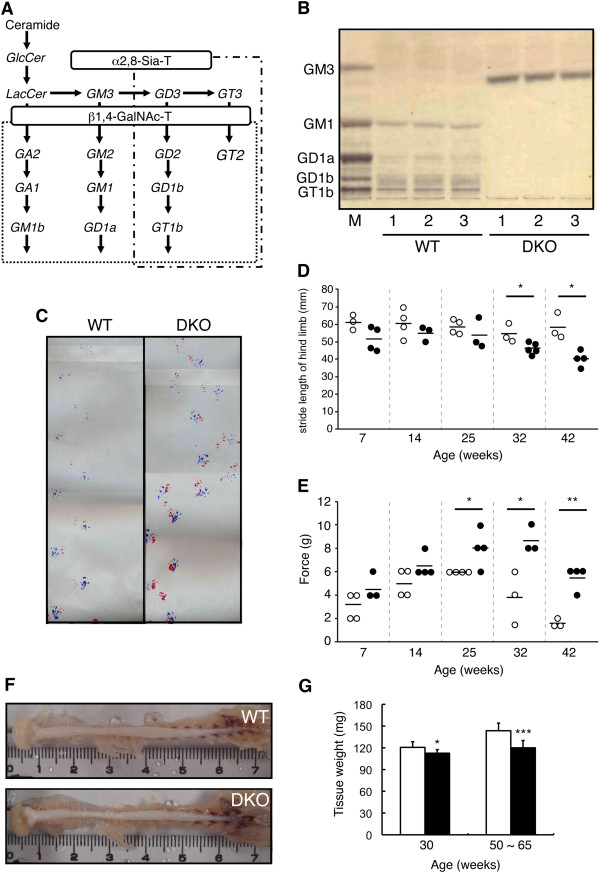Figure 1.
Abnormal phenotype in double knockout (DKO) mice. (A) A synthetic pathway of gangliosides. Structures boxed in two squares were depleted in DKO mice. (B) Thin-layer chromatography (TLC) of gangliosides from spinal cord of 15-week-old wild-type (WT) and DKO mice was performed with control gangliosides from bovine brain (lane M). Resorcinol was used for the detection. (C) Gait pattern was examined by the footprint test in 70- to 80-week-old mice. A red color was used for the forelimb and a blue color for the hind limb. (D) Average values for stride length of hind limb in individual age WT and DKO mice. The number of tissues examined was n = 3 or 4 (WT, open circles; DKO, closed circles). Data were analyzed by two-way analysis of variance (ANOVA). Comparison of WT and DKO with same age revealed that they were statistically significant by Bonferroni post hoc test (shown in figure, *P <0.05; **P <0.01). (E) von Frey strings test in individual age WT and DKO mice. The number of tissues examined was n = 3 or 4 (WT, open circles; DKO, closed circles). Two-way ANOVA analysis of data was performed as described in (D). Comparison of WT and DKO with same age was done, and the results are shown (*P <0.05; **P <0.01). (F) Photographs of fixed spinal cord from 44-week-old WT and DKO mice. Scale: centimeter (cm). (G) Weights of the spinal cord of WT and DKO mice. The numbers of tissues examined were n = 11~13 (WT, open columns; DKO, closed columns). Data were presented as mean ± standard deviation (SD) and were analyzed by Student t test (*P <0.05; ***P <0.001).

